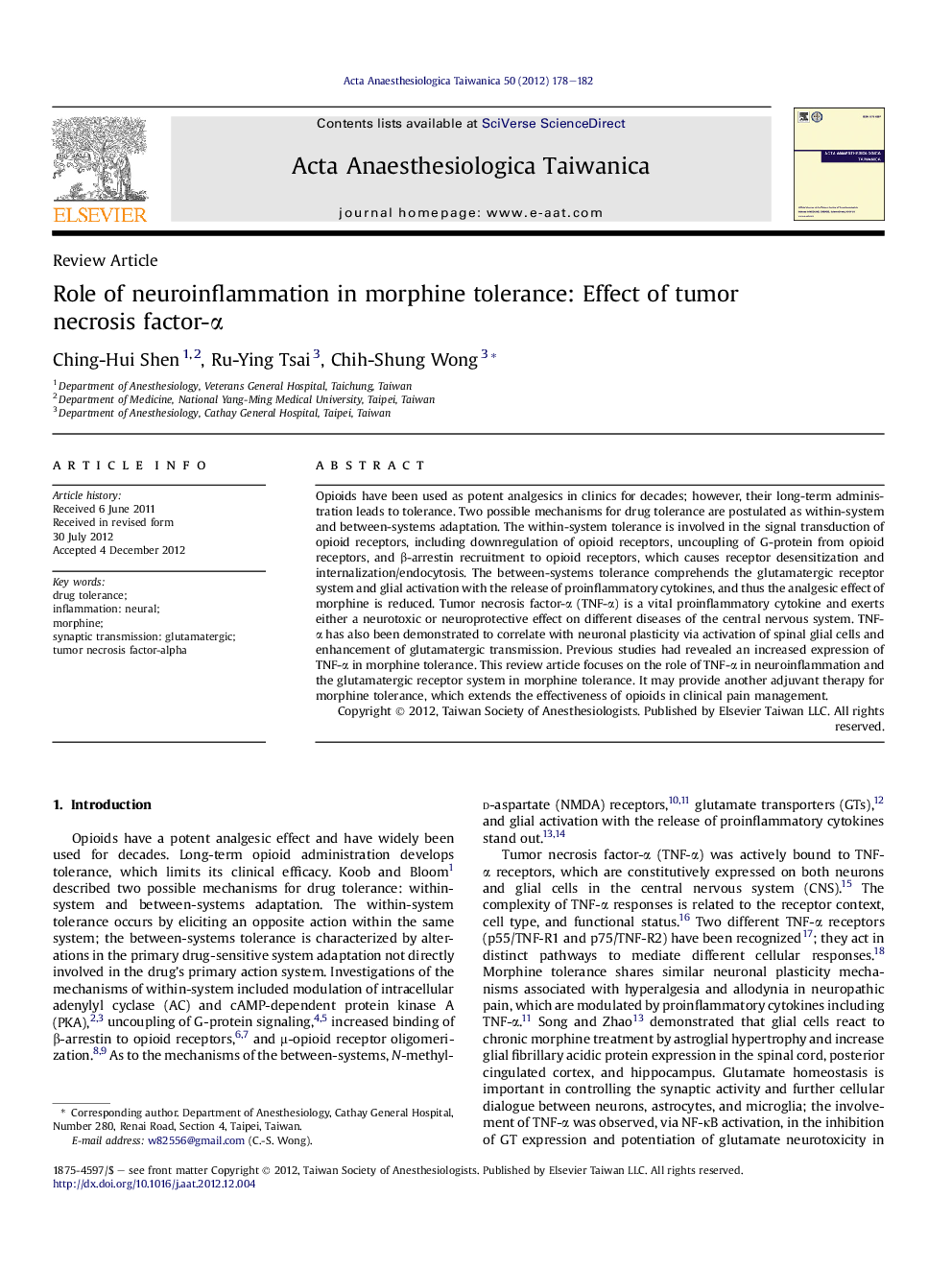| Article ID | Journal | Published Year | Pages | File Type |
|---|---|---|---|---|
| 2741432 | Acta Anaesthesiologica Taiwanica | 2012 | 5 Pages |
Opioids have been used as potent analgesics in clinics for decades; however, their long-term administration leads to tolerance. Two possible mechanisms for drug tolerance are postulated as within-system and between-systems adaptation. The within-system tolerance is involved in the signal transduction of opioid receptors, including downregulation of opioid receptors, uncoupling of G-protein from opioid receptors, and β-arrestin recruitment to opioid receptors, which causes receptor desensitization and internalization/endocytosis. The between-systems tolerance comprehends the glutamatergic receptor system and glial activation with the release of proinflammatory cytokines, and thus the analgesic effect of morphine is reduced. Tumor necrosis factor-α (TNF-α) is a vital proinflammatory cytokine and exerts either a neurotoxic or neuroprotective effect on different diseases of the central nervous system. TNF-α has also been demonstrated to correlate with neuronal plasticity via activation of spinal glial cells and enhancement of glutamatergic transmission. Previous studies had revealed an increased expression of TNF-α in morphine tolerance. This review article focuses on the role of TNF-α in neuroinflammation and the glutamatergic receptor system in morphine tolerance. It may provide another adjuvant therapy for morphine tolerance, which extends the effectiveness of opioids in clinical pain management.
